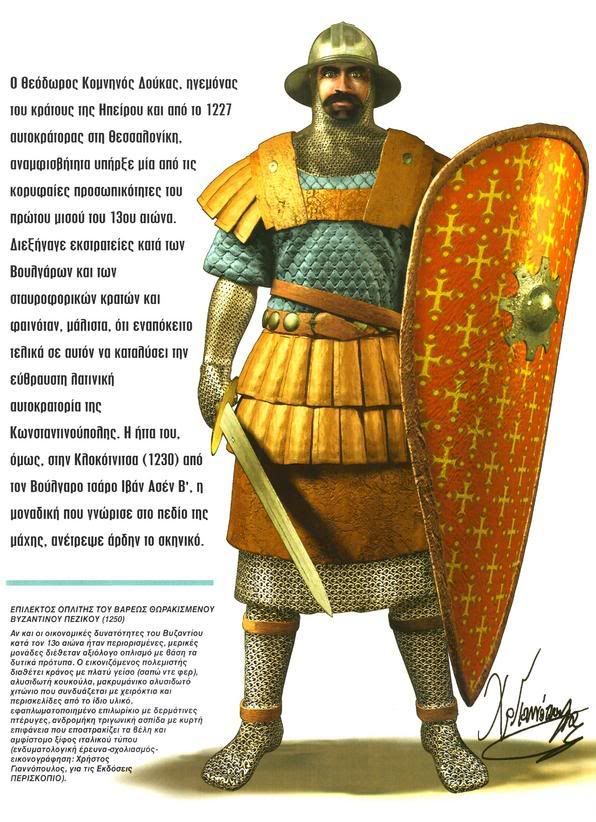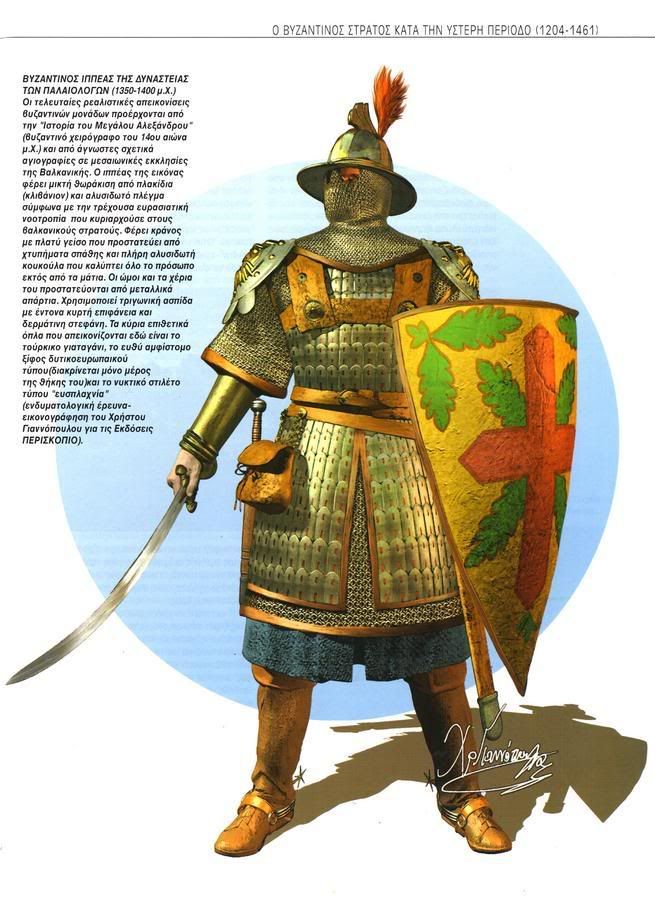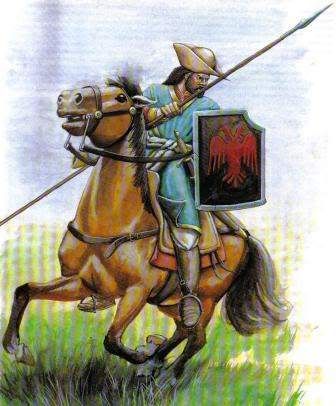To help out with some of your Roman late units here our old research which determined the current look of the Tzakones in Tsardoms and this includes some conversations that our historian Spyros had with AnthoniusII:
4. Tzakones (gr. Τζάκονες)
(Function: Marines, Guards, Palace Troops)
(Other Names: Lakones)
Michael transplanted families from the Morea and possibly elsewhere to Constantinople and enrolled the men as soldiers in his new fleet. Pachymeres writes the Michael “had great need to settle the city with light armed soldiers, so he had many Lakones, arriving from Morea, settled as natives, distributing places near the city. Bestowing the yearly pay, he also supplied them with many other liberalities, and used them for many things inside and outside Constantinople, for they displayed worthy behavior in the wars”. These Lakones-Tzakones came to Constantinople in late 1261 or early 1962 and supplemented the Gasmouloi who had formed the first military contingents of Michael’s new fleet…Through the 1260s and 1270s the Tzakones, together with the Gasmouloi, formed the basic Byzantine marine forces. In the passage quoted above, Pachymeres calls the Lakones or Laconians, people from the southeastern Morea, around Mystra. He felt their name had been corrupted into Tzakones. When describing the composition of the naval expedition to Thessaly in 1273, Pachymeres writes, “…many others were from the Lakones whom they called Tzakones, corrupting their name, whom the ruler transplanted with their wives and children to Constantinople from the Morea and the western parts, and who were numerous and warlike”. Gregoras, too, paraphrasing Pachymeres, points out the peculiar name of these soldier: “Joining the Gasmouloi, the Lakones, a sea army in arms, coming to the emperor from Peloponnesos, whom the common spoken language called Tzakones”.
The word “Tzakon”, the origin of which is still uncertain, was used during the byzantine era in a number of distinct ways. Of interest to us here are two of these: 1st) it denoted a wide variety of military or paramilitary professions including light-armed soldiers, fortress guards (see below), palace guards and paramilitary police, and 2nd) it was used as an ethnic designation for an indigenous inhabitant of Lakonia in the Pelopon. In the cited passages from Pachymeres and Gregoras, it is used in both of these senses. Michael VIII’s Tzakones (or Lakones) were those men whom he transplanted from the Morea, at first perhaps only from Monemvasia, later from other parts of Morea (these being ethnic Tzakones ), and probably from elsewhere as well to serve as marines, light armed troops to guard the walls of the city, and, as we learn from other sources, even as a division of Palace guards. Although there no need to think that Michael’s Tzakones were exclusively recruited from the population of Lakonia, or even Morea, Pachymeres clearly thought that the majority of these men had come from the eastern Peloponnesos. Thus Michael’s Tzakones were Tzakones by occupation and, at least to some extent, Tzakones by ethnicity.
The Tzakones also served as bodyguards and as another palace guard division and were armed with clubs or cudgels (apelatikia), dressed in sky blue, and wore distinctive breastplates adorned with two white lions face to face embroided on breast and back. As discussed above, the word Tzakon was applied to the light-armed troops recruited by Michael VIII to defend his restored capital and to serve aboard his new fleet. Some of the Soldiers came among the Gasmouloi, others came from Peloponnesos but still, other came from unknown areas outside Constantinople. Michael VIII’s performed a number of tasks: guarding the walls of Constantinople, manning the fleet, and, evidently, serving as palace guards. What made matters confusing was that some but not all of these Tzakones were ethnic Tzakones, that is, native inhabitants of the south-eastern corner of the Morea.
To cut a long story short: Michael made a new contingent of marine troops from transplanted men from Morea, from Gasmouloi and from other citizens of the Empire. These were used to be marines, to guard the walls of Constantinople and to serve also as palace guards. They had nothing to do with the local troops that garrisoned the Late Byzantine Kastra in the provinces under the Tzaousios (or Kastrophylax)
The Dilemma
Spoiler Alert, click show to read:
Pictures
UpgradesSpoiler Alert, click show to read:
Recruitment ConditionsSpoiler Alert, click show to read:
Spoiler Alert, click show to read:










 Reply With Quote
Reply With Quote






















